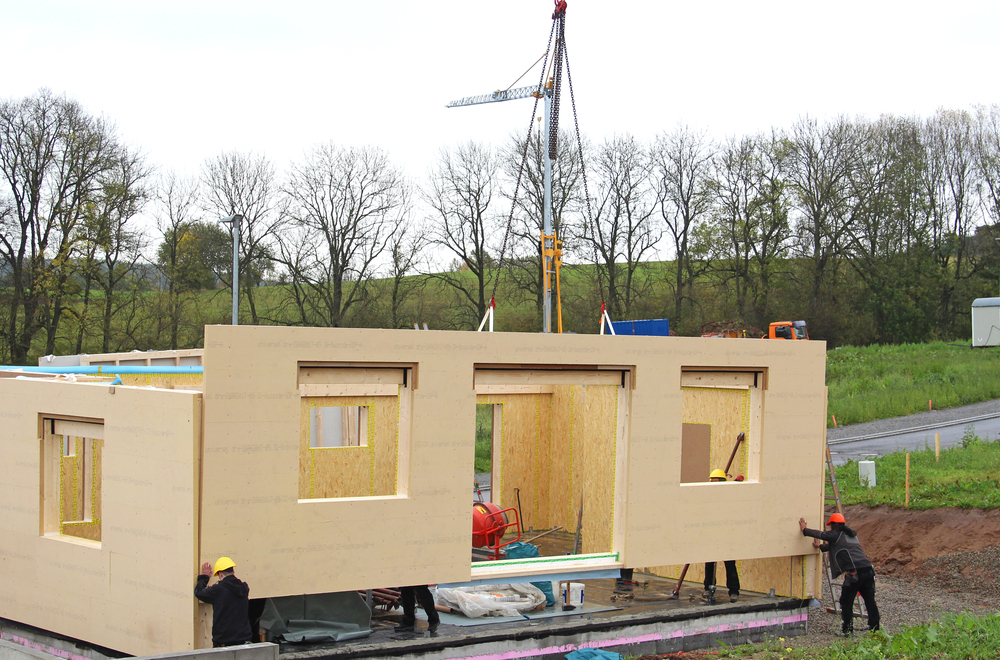
Prefabricated Building Systems: Revolutionizing Construction in the 21st Century
Author:
Global Industry Hub
Published Date:
07 Apr 2024
In today's rapidly evolving construction industry, prefabricated building systems are emerging as a game-changer, offering efficiency, sustainability, and innovation in building construction. From residential homes to commercial buildings, prefabrication techniques are reshaping the way structures are designed, fabricated, and assembled. Let's delve into the world of prefabricated building systems and explore their impact on the construction landscape.
1. The Rise of Prefabrication: Transforming Traditional Construction Practices
Prefabrication: A Paradigm Shift in Construction
Prefabrication involves the manufacturing of building components off-site in a controlled environment before transporting them to the construction site for assembly. This shift from traditional on-site construction to off-site manufacturing offers numerous advantages, including reduced construction time, enhanced quality control, and minimized material waste. Prefabricated building systems leverage advanced manufacturing technologies such as robotics, automation, and digital modeling to streamline the construction process and deliver high-quality structures efficiently.
2. Efficiency and Speed: Accelerating Project Timelines
Faster Construction, Faster Returns
Prefabricated building systems enable faster project delivery by minimizing on-site construction time and reducing delays associated with weather conditions and labor shortages. Off-site fabrication of building components allows multiple tasks to be carried out simultaneously, accelerating project timelines and enabling developers to meet tight deadlines. This efficiency translates into cost savings and faster returns on investment, making prefabricated construction an attractive option for developers and investors seeking rapid project completion.
3. Sustainability and Resource Efficiency: Reducing Environmental Footprint
Building Green with Prefabrication
Prefabricated building systems promote sustainability by optimizing resource utilization, minimizing construction waste, and reducing carbon emissions. Off-site manufacturing facilities operate under controlled conditions, allowing for precise material measurement and waste reduction. Additionally, modular construction techniques enable the reuse and recycling of building components, further minimizing environmental impact. By embracing prefabrication, the construction industry can contribute to global sustainability goals while delivering eco-friendly and energy-efficient buildings.
4. Design Flexibility and Customization: Meeting Diverse Project Requirements
Tailored Solutions for Every Project
Contrary to common misconceptions, prefabricated building systems offer ample design flexibility and customization options to meet the unique requirements of each project. Advanced digital modeling and parametric design tools allow architects and engineers to create highly customized building components that can be manufactured off-site with precision. From residential modules to complex commercial structures, prefabrication enables architects and developers to realize their design visions while maintaining cost-effectiveness and construction efficiency.
5. Quality Assurance and Consistency: Ensuring Superior Building Performance
Precision Engineering for Superior Results
Prefabricated building systems are renowned for their superior quality and consistency compared to traditional construction methods. Off-site manufacturing facilities adhere to strict quality control measures, ensuring that each building component meets stringent standards for strength, durability, and performance. By eliminating variability associated with on-site construction, prefabrication minimizes defects, rework, and post-construction issues, resulting in buildings of exceptional quality and longevity.
6. Cost-Effectiveness and Value Proposition: Maximizing Returns on Investment
Delivering Value at Every Stage
While the initial investment in prefabricated building systems may be higher than traditional construction methods, the long-term benefits far outweigh the upfront costs. The efficiency, speed, and sustainability of prefabricated construction translate into significant cost savings over the project lifecycle. Reduced construction time, minimized material waste, and enhanced building performance contribute to the overall value proposition of prefabricated buildings, offering developers and owners a compelling return on investment.
7. Market Adoption and Future Outlook: Embracing a New Era of Construction
Driving Innovation and Growth
The adoption of prefabricated building systems is on the rise globally, driven by increasing demand for efficient, sustainable, and cost-effective construction solutions. As technology continues to advance and industry stakeholders embrace prefabrication techniques, the market for prefabricated buildings is poised for significant growth. From modular housing developments to modular skyscrapers, prefabricated construction is redefining the future of building design, construction, and urban development. As we look ahead, prefabrication will play a pivotal role in shaping a more efficient, sustainable, and resilient built environment for generations to come.


